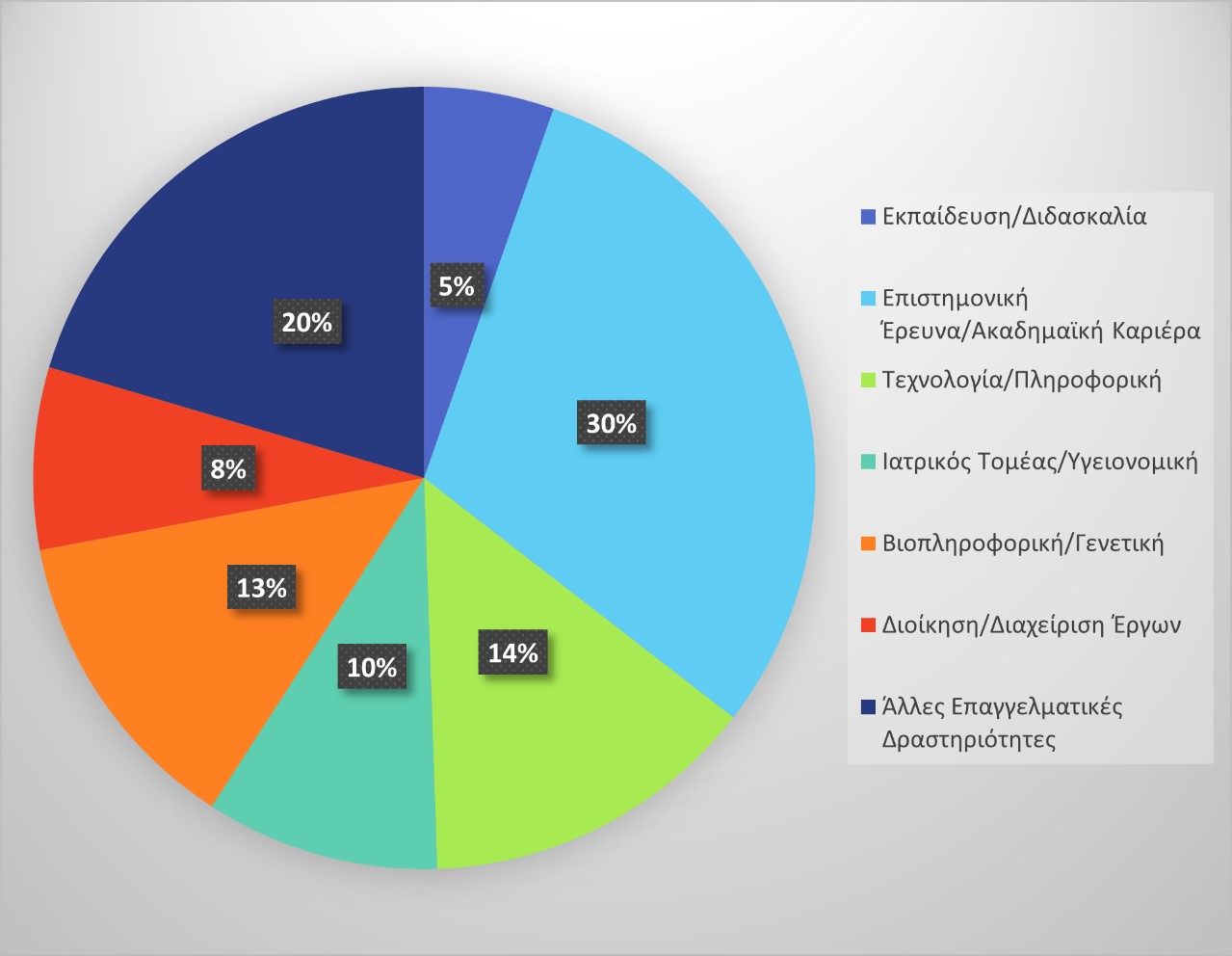
Based on the analysis of the employment categories of program graduates, we can draw the following conclusions:
Job Variety: Graduates of the program work in a wide range of professions, from teaching and scientific research to technology and healthcare. This demonstrates the diversity of opportunities offered by the program to its graduates.
High Level of Education: The large number of graduates opting for scientific research and academic careers proves the high level of education and the quality of the program.
Market Needs Responsiveness: The presence of graduates in fields such as technology, healthcare, and bioinformatics reflects the program’s responsiveness to the needs of the modern job market.
International Dimension: The presence of graduates working in various countries such as Germany, Denmark, and Cyprus demonstrates the international recognition of the program and the ability of graduates to integrate into different work environments.
The Master’s program in “Bioinformatics – Computational Biology” provides a wide range of options for future career prospects, and their training can prepare them for various fields and jobs, depending on their interests and goals. Overall, this analysis shows that graduates of the master’s program have acquired the skills and knowledge to meet various demands of the job market and to successfully advance their scientific and professional careers.
